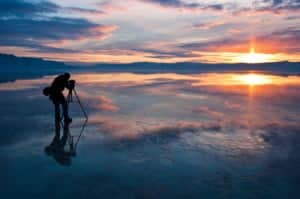
Two weeks ago (I know, I'm slow…) on the Improve Photography Facebook fan page, I asked our community what photography tips they wish they would have learned sooner. I was looking for lessons that many photographers procrastinate learning and it ends up keeping them back from progressing as photographers.
Over 96 photographers commented on that facebook comment with their hard earned lessons, and I grabbed the most popular lessons from the group to share here. I hope that this article teaches you many ways to save yourself from making rookie mistakes (like I still seem to do every day!).
Lesson #1: Envision, plan, and then create
There is nothing–at all-wrong with looking at great photography to get creative inspiration. Spend the time thinking and thinking of what type of photo you want to create and how you can do it. Then, get to work. Almost every one of my best shots are the result of weeks of planning. Rarely did I just “happen” to find a great scene or model to photograph. Make each photo “your own,” whether it be a little bit different lighting or composition, make it feel personal (Tip submitted by Brendan Williams and Chris Mullins)
Lesson #2: The histogram is NOT optional
Spending just 5 or 10 minutes to learn how to use the histogram can make a huge difference in your photography. Personally, I use the histogram most of the times that I go out and shoot. I use it when shooting a wedding to make sure that the bride's dress is not overexposed, I use it when shooting landscapes in low light to make sure I am gathering enough light, etc. Learn to use the histogram (Tip submitted by Mike Gothard, Thorpe Griner)
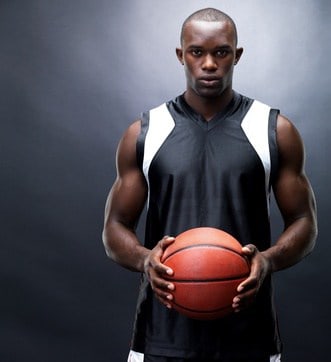
Lesson #3: Learn to wirelessly fire the flash off-camera
By getting the flash off the camera, the lighting changes dramatically for the better. Directional light throws pleasing shadows on the subject and highlights the natural curvature of the face. If you haven't yet learned how to fire the flash off-camera, I recommend checking out my lighting gear recommendations page. There, you'll find a $20 flash trigger that works flawlessly. No need to change camera settings at all. Just put the trigger on the hot shoe of your camera (the hook on the top of your DSLR) and attach the flash receiver to the bottom of ANY flash. That's all it takes. Take a picture and your flash will fire. (Tip submitted by Rick Walther, Teara Galbraith)
Lesson #4: Learn to change the active focus point
For most (but not all) photography, I recommend using a single autofocus point rather than allowing the camera to choose several points. When many photographers learn to use one focus point, they often use only the center focus point. To do this, they focus on the eye of the subject or on the correct place for a landscape, and then recompose the picture while holding the shutter button half-way down. After composing to the correct composition, the photographer then finishes pressing in the shutter button. If you sit down for a minute with your camera manual and learn to change the focus point, then you will likely get a much larger percentage of your shots in focus. (Tip submitted by Lyndsey DeSantis, Liam Behan)
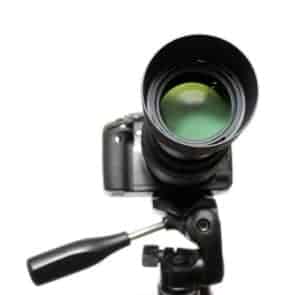
Lesson #5: With tripods, it's “Buy right, buy once”
Several of our Improve Photography community commented that they wish they wouldn't have wasted their money on cheap tripods. The cheapies might seem like good deals, but you'll end up buying four or five before you finally break down and buy a good one that will last your lifetime. Not sure which tripod to buy? Check out my recommendations of the best tripods on the market. (Tip submitted by Derek Bell-Jack, Steve McCusky, Dave McKenzie)
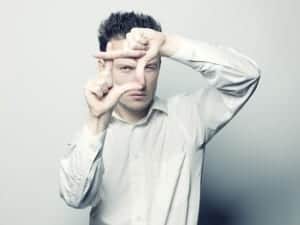
Lesson #6: Photography is REALLY about composition and light
When I saw this tip, which was submitted by Roel Knol, Chand Dumbris, Patsy J Lander, on the Facebook page, I knew this one had to be included in the list. Personally, I spent about the first year of my photography focused on the tiny little technical details, hoping my photography would improve. I learned too late that great photography is about interesting light and strong composition. Everything else is just a cherry on top.
Lesson #7: Manual Mode
There is no need to be afraid of manual mode. Just turn it on and start playing–you'll figure it out quick. If you understand what shutter speed, aperture, and ISO do, you'll quickly learn how to shoot in manual. Perhaps the biggest mistake beginning photographers make when starting to shoot in manual mode is that they expect to nail the shot the first time. Manual mode is a process of trial and error. You'll get faster and faster at judging the correct settings, but you have to accept the fact that it will take a few tries for each set up. (Bronnie Thompson)
[callout type=”center” title=”Photography Portfolio Reviews – $39″ message=”Have the expert editors at Improve Photography review your photography portfolio in-depth and send you an audio feedback file for just $39″ button_text=”Check it out” href=”https://improvephotography.com/online-portfolio-reviews”]
Lesson #8: Bounce flash
Most photographers buy a flash with their new camera, but most beginners just aim the flash head right at the subject and shoot. If you point the flash at the ceiling or a side wall and bounce the flash onto the model, you'll get significantly softer and more flattering light. It's incredibly easy to learn, but many photographers are afraid to try it for the first time. (Ryan Fernandez)
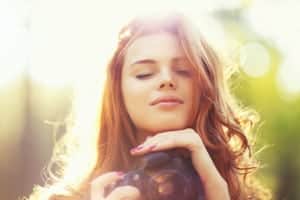
Lesson #9: Exposure Compensation
I must admit that it took me a while to learn to use exposure compensation. I felt like my head was already spinning just trying to understand the aperture, so the thought of changing the exposure in aperture priority was a daunting task when I started out. Once I tried it, though, I was so glad I did! Exposure compensation is simply a way of telling the camera that the exposure it is picking is not what you want. You simply scroll the little wheel on your camera to choose a brighter (+1 or +.7 exposure compensation, for example), or a darker picture (-1 or -.7 exposure compensation). You set the exposure compensation and then the camera will choose the setting that it things is the correct exposure and then add or remove a little brightness according to what exposure compensation you choose. (Submitted by Jim Thurman)
Lesson #10: It is NOT “cheating” to use Photoshop
I have strong feelings about the importance of using digital image editing in our photography. In fact, I had a conversation with Dustin Olsen (who is working with me at Improve Photography now), about digital image editing a couple days ago and was glad to hear that he feels just like I do. My photography is not news, my photography is art. Just like a painter can put whatever she wants in a painting, I feel that I can do whatever I want to my photos in Photoshop as long as I don't lie and tell people it is a representation of the actual scene. If you're passionate about this topic too, check out this article on why I think digital image editing is perfectly okay. (Idea submitted via Facebook by Terasa Lewis)
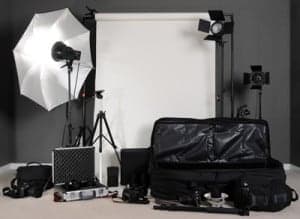
Lesson #11: Don't buy more gear until you hit a wall with the gear you already have
I often get emails from brand new beginning photographers asking what lens they should buy because their 18-55 kit lens isn't sharp enough. I'll be perfectly honest… I've never met a photographer who has less than one year of experience who is better than the kit lens. I'm not saying that their pictures couldn't be helped out a tiny bit by a sharper lens, but I am saying that there are about 100 more important things for a beginner to master before anyone is going to notice that the picture is barely less sharp from the lens. 99% of sharpness problems that I see are caused by poor shooting technique, and not a cheap lens. Once the photographer masters the fundamentals, then a new lens is an important investment and the sharpness will definitely improve. The same is true for many other photography gear items. It isn't necessary to buy $3,000 in studio equipment unless you've already learned how to use a bare bones $120 lighting set upto its full advantage. It probably isn't necessary to buy a $1,500 macro lens until you've reached your limit by using a simple close focus filter. It probably isn't necessary to buy a 5d mark II until that is the weak link in your photography. I love gear, but I feel bad when I hear photographers say they feel limited by their beginner gear when, in reality, they should probably just get out there and shoot more. (Abby Krim)
Lesson #12: A $15 reflector will do more to improve your photography than a $2,000 portrait lens
I read this comment by Krista Barton DeVries on our Facebook fan page and I knew this one had to be included in the article. Lighting… is…. everything! I'm amazed at the number of photographers that invest in a $2,500 70-200mm f/2.8 lens before even buying a simple lighting kit for $120. There are few photographers who love getting a new lens in the mail more than I do, but I have to agree that if you really want your pictures to improve, spending a little money on a reflector or other cheap lighting accessories will do much more to improve your photography.
Lesson #13: Get a deposit before booking a shoot
I read this hard-earned lesson sent in by Troy Browder and I had to laugh, because any pro photographer who has been around for a while has been burned. I learned the hard way, too. Get a deposit and get a contract before ever putting a client down on your calendar. It's just good business.

Lesson #14: Shoot many DIFFERENT shots, but don't waste time getting 10 copies of the same scene
I'll admit that this lesson is a bit controversial. Many photographers (including a lot of great photographers) like to take 10 or 15 shots of each shot. Personally, I like to make sure that every picture I take is different from the previous one, even if the difference is only slight. If I see a scene, I'll shoot it once, analyze the picture, change my angle or the exposure slightly, and then shoot again. Rather than just ripping the shutter to get multiple shots of the scene, I like to change each shot just slightly as I work the scene. This makes me slow down and not get stuck with the first shot of the scene, but rather keep changing until I find the exact right angle. Work your photography like a surgeon making tactical strikes rather than a trash man just trying to do the same thing over and over again. (Dawn Fort)
Lesson #15: Learn where to focus when shooting a group of two or more people
Incredibly important! When shooting a group photo when you want to use somewhat shallow depth of field, make sure to focus on the person closest to the camera. This is also true for shooting couples where one person is slightly in front of the other person. Many, many times I have made the mistake of focusing on someone in the group who is one or two rows back, but this always make the shot look blurry. With time, I've learned to ALWAYS focus on the person in the group closest to the camera. (Paulette Gollan)
Oh, and you DEFINITELY don't want to miss this article on posing people for group photos.

Jim, there are a lot of lists out there for photographers to keep in mind. This has got to be one of the most useful I’ve seen. I especially appreciate numbers 1, 2, 5, 6, 7,….ah heck, they’re all good. Thanks for posting this.
Another helpful post from IP! 5, 7, and 14 are definitely my top 3 lessons. I don’t do any studio shooting right now but if I decide to go that route later on, I’m sure a few of these will be helpful to know going in!
@Rick – Thanks for the kind compliment. It’s a lot of work to put these posts together, so I appreciate the encouragement.
Very helpful tips indeed! I have only been shooting DSLR for 2 years and found them all helpful and true especially 2 and 3 both of those I need to research more!
Love this line: interesting light and strong composition
Thanks!
GREAT list. Thanks to all for sharing.
just realized I need to buy a good tripod stand 🙂
I discovered improvephotography.com a few weeks ago, and I must say that this is one of the best websites I have come across thus far. Thanks for posting this awesome list and keep up the great work.
Thanks for the precious tips.
These are definitely great tips and I can’t wait to get out and try a couple.
I’m a enthusiast and very beginner one but I do appreciate to read tips like these. I like to experiment constantly. Great work!!!
It’s posts like these that keep my enthusiasm levels high! Thank you 🙂
Good thing I stumbled to your post before I started a serious habit in photography. These are indeed very useful tips. Thanks!
Love this list but I have to disagree with one point. A good lens makes an incredible difference no matter what your skill level.
Thanks to Paulette…I learned something very helpful with #15. No wonder I struggle with my group shots!!
This list is fantastic! And even though I know some of them, there were a couple I needed a reminder about. Fantastic!
Great post. I wish I had learned to shoot in Manual sooner. I used to shoot in Aperture Mode. When I would put my flash on I noticed that my pictures were not very clear. It finally hit me that my camera would default to 1/60th shutter speed and that was not fast enough to catch a small child witout it being fuzzy. I changed to Manual Mode, cranked up the shutter speed to 1/125th or 1/160th and my pictures are clear all the time now.
Thanks for a great site.
Great stuff! Thanks for the tips!
Jim, thank you for putting together this wonderful list. I’m keeping it front and center on my desktop. (I’m glad to hear I’m not the only one who has had trouble learning exposure compensation!)
Hi,
Thank you for your nice article on improve photography.I like for your good writing.
Thanks
Hi:
Three points:
The histogram is based on a JPEG not a RAW file. Maybe you shouldn’t put so much faith in it.(BTW, I still shoot film.)
I don’t consider a zoom lens, 70-200mm f/2.8, the same thing as a portrait lens. A portrait lens on a 35mm/full frame camera is a fixed focal length 105mm. Otherwise you’ve made an excellent point.
I don’t agree with #15, focus point in front. Sometimes putting person nearest to lens out-of-focus can point your audience to the real subject of the photo.